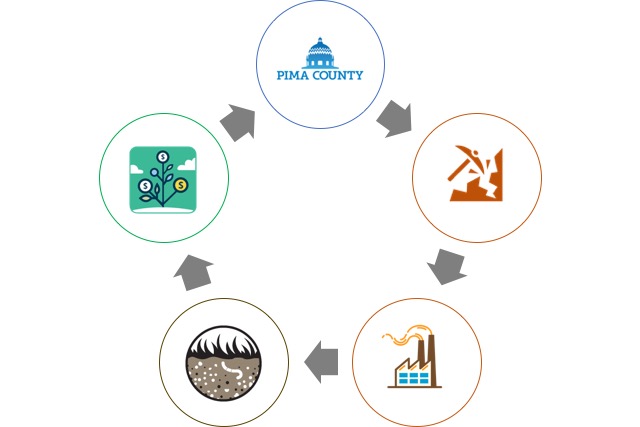Distribution and accumulation of metals in soil and vegetation surrounding a molybdenum roasting facility at the Sierrita mine, Pima County
Distribution et accumulation de métaux dans le sol et la végétation entourant une installation de grillage de molybdène à la mine de Sierrita, comté de Pima
2020
OHM Project
Pima County OHMi

Leader : Novo Luís
Project leader’s laboratory :
Full address of laboratory :
Coauthor(s) : Raina Maier
Keywords :
Phytomining
Metal pollution
Rhenium
Phytoremediation
Mine tailings
Pima County
Disciplines :
Biogeochimie
Biologie
Ecologie
Geologie
Abstract :
Mining provides essential raw materials for an industrialized society. However, it often comes at a great cost. Mining activities, including mineral processing-related emissions and the disposal of tailings, can be severely hazardous to human health and the environment. In Pima County, copper mining began in the 1870s. Today, the combined output of its three major mines represents nearly a quarter of the US total copper production. The Sierrita mine is an open-pit copper and molybdenum mining complex, whose first claims were recorded in 1895. Today, the Sierrita operation comprises a 100,000-metric ton-per-day concentrator that produces copper and molybdenum concentrate. Molybdenite (MoS2), is one of the by-products in this concentrate, and the main host of rhenium (Re). Following oxidation roasting of the concentrate, Re is released as rhenium heptoxide (Re2O7) with the flue gases, and then dispersed on the soil in its most stable and bioavailable form - the perrhenate ion (ReO4-). Rhenium is one of the scarcest (7 × 10^−8 %) and most broadly dispersed elements on Earth’s upper crust. Because of its rarity and distinguishing physicochemical properties, rhenium is also one of the costliest metals. Recent reports suggest that certain plants may have the ability to accumulate economically profitable amounts of Re, opening a window of opportunity for phytomining – a plant-based technique to retrieve valuable elements from natural and waste substrates. The main objectives of this project are to investigate the occurrence of metal contamination due to molybdenum roasting emissions, and assess the viability of field-scale Re phytomining.

